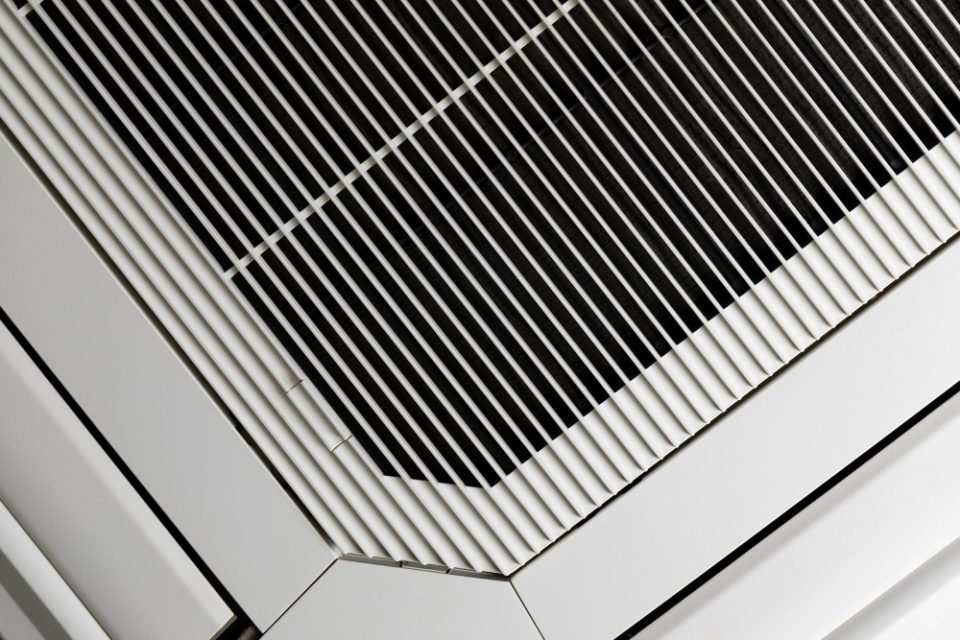When it comes to maintaining a comfortable and healthy indoor environment, few elements are as important as the quality of the air circulating in your home. HVAC (Heating, Ventilation, and Air Conditioning) systems play a vital role in regulating temperature and airflow, but it’s the balance between ventilation and air filtration that truly dictates the quality of the air you breathe. While both ventilation and filters serve crucial functions in your HVAC system, they do so in different ways. Understanding how each contributes to air quality and system efficiency is essential for homeowners seeking to improve their HVAC system’s overall performance.
In this article, we’ll explore the roles of ventilation and air filters in HVAC systems, comparing their strengths and weaknesses, and ultimately helping you decide which works best for your home.
What is Ventilation?
Ventilation refers to the process of bringing in fresh air from the outside and expelling stale, contaminated air from the inside. The primary purpose of ventilation in an HVAC system is to maintain air quality by ensuring that oxygen levels remain adequate, while pollutants like carbon dioxide, moisture, and other volatile organic compounds (VOCs) are expelled. Proper ventilation prevents air from becoming stagnant and helps to maintain the balance between indoor air quality and comfort.
Ventilation systems come in a few different forms, each suited to different needs. For example, natural ventilation utilizes windows and vents to promote airflow, while mechanical ventilation uses exhaust fans and duct systems to actively control airflow in and out of the building. In some advanced HVAC systems, ventilation is achieved through controlled ventilation units such as heat recovery ventilators (HRVs) or energy recovery ventilators (ERVs), which are designed to bring fresh air into the home without wasting energy.
Tip: To optimize ventilation, it’s important to ensure that your HVAC system is appropriately sized for your home. Too little ventilation can cause the buildup of moisture and pollutants, while too much can lead to wasted energy and excess heating or cooling costs.
What Are Air Filters?
Air filters, on the other hand, are designed to purify the air that circulates within the HVAC system by trapping particles like dust, dirt, pollen, pet dander, and other allergens. The filters in your HVAC system are typically located in the air handler unit, and they play an important role in ensuring that the air that enters your home is as clean as possible.
The effectiveness of an air filter is measured by its Minimum Efficiency Reporting Value (MERV) rating, which indicates its ability to capture particles of different sizes. The higher the MERV rating, the more efficient the filter is at trapping smaller particles. Standard filters, for instance, may have a MERV rating between 1 and 4, while high-performance filters can have ratings as high as 16 or more. High-efficiency particulate air (HEPA) filters, which are often used in medical or clean-room environments, are an example of filters with a very high MERV rating and are particularly good at trapping even the smallest airborne particles.
Tip: To maintain optimal air quality, it’s crucial to change your filters regularly—typically every 1-3 months depending on your filter type and your household’s needs (pets, allergies, etc.). Neglecting to change filters can lead to reduced air quality, decreased system efficiency, and potential damage to your HVAC system.
Comparing Ventilation and Filters
While both ventilation and filters are essential to an HVAC system’s operation, they serve distinctly different purposes, and understanding their roles can help you determine which approach is best for your home.
1. Air Quality
Ventilation directly impacts the overall air quality in your home by ensuring that fresh outdoor air replaces stale, potentially contaminated air. This is particularly important in homes with high indoor air pollutants, such as homes with smokers, mold problems, or high moisture content. Without adequate ventilation, pollutants can accumulate, leading to respiratory problems, allergies, or even more severe health issues.
In contrast, filters are effective at trapping specific particulate matter, like dust, dirt, and allergens. They can significantly improve the quality of air that circulates within the home by removing unwanted particles. However, filters don’t have the ability to remove gaseous pollutants, such as volatile organic compounds (VOCs) or carbon dioxide, which ventilation systems are designed to handle.
Verdict: If your main concern is particulate matter, such as dust or allergens, filters are more effective. If you’re concerned about stale air or the presence of gases, such as carbon dioxide, proper ventilation is the better solution.
2. Energy Efficiency
While both systems contribute to energy efficiency, they do so in different ways. Ventilation, particularly through mechanical means, often requires additional energy to pump air in and out of the building. In traditional ventilation systems, this can mean that the HVAC system must work harder to condition the incoming air. However, modern systems like HRVs and ERVs have been designed to minimize energy waste by exchanging heat between outgoing and incoming air, thus reducing heating or cooling costs.
Filters, on the other hand, don’t require additional energy to operate, though the HVAC system itself might use more energy if the filter is clogged. A dirty filter restricts airflow, causing the system to work harder to maintain the desired temperature, thereby reducing energy efficiency.
Verdict: Ventilation can be less energy-efficient if not properly designed, especially in homes where the temperature extremes are significant. Filters, if not regularly replaced or maintained, can reduce efficiency, but the system itself doesn’t expend energy specifically for filtration.
3. Maintenance
Both systems require regular maintenance, but in different ways. Ventilation systems need to be checked for blockages, leaks, or malfunctions, especially in ducts or vents. Over time, debris can accumulate in the ducts, reducing airflow and efficiency. Regular cleaning of ducts and vents is essential for optimal function.
Filters require less maintenance than ventilation systems but need to be replaced or cleaned regularly. Depending on the type of filter and the air quality in your home, changing filters every few months can prevent buildup that reduces airflow and causes strain on the system.
Verdict: Filters tend to be lower-maintenance but require more frequent attention in terms of replacement. Ventilation systems require less frequent but more involved maintenance.
4. Cost
In terms of initial cost, ventilation systems—particularly mechanical ones—tend to be more expensive to install, especially when retrofitting a home with existing ductwork. While an HRV or ERV system can improve indoor air quality and energy efficiency, it requires both upfront investment and maintenance costs.
Filters are typically much more affordable, and regular replacement costs are relatively low. However, high-efficiency filters, such as HEPA filters, can come at a premium. In either case, the cost of not maintaining filters or ventilation systems can result in higher energy bills or HVAC system repairs.
Verdict: Filters are the more affordable option in terms of installation, but ventilation systems can provide long-term savings in energy efficiency and air quality improvements.
Which Is Best for Your Home?
In reality, both ventilation and air filters work best when used together in a well-rounded HVAC system. Ventilation ensures fresh, clean air is regularly introduced to your home, while filters capture airborne contaminants that make their way into your indoor air. The combination of both helps create a balanced, healthy living environment that’s energy-efficient and comfortable.
For homeowners who live in areas with high outdoor air pollution, smoke, or allergens, installing a ventilation system that brings in fresh, filtered air is a smart choice. Conversely, if you’re mainly concerned with controlling indoor allergens or dust, a high-efficiency filter may be the solution. In most cases, a balanced approach—using both ventilation and effective filters—is the best way to optimize your HVAC system.
Conclusion
The debate between ventilation and filters isn’t about one being better than the other but understanding that each has its role to play. Ventilation is essential for maintaining proper airflow and eliminating gaseous contaminants, while filters are perfect for trapping airborne particles. Ideally, combining both systems will provide the best results, creating a healthier indoor environment and ensuring that your HVAC system runs efficiently. Consider your home’s specific needs—whether it’s managing pollutants, allergens, or temperature—and optimize your HVAC system to strike the perfect balance between ventilation and filtration.

